Authenticity in education and academic honesty are paramount to a robust learning environment. The rise of AI poses a significant set of challenges for educators seeking to preserve honesty and integrity in the classroom. At the same time, AI tools for education allow students to gain experience with cutting edge technologies changing the world of work. Properly teaching students to use AI in ways that supports their authentic work instead of replacing it is a paramount task facing educators in the 21st century.
Research has emerged that over-reliance on AI hurts students' cognitive abilities. At the same time, it is clear that experience with new technology is critical to successful education and preparedness for students to enter the workforce. While it is indeed important to balance these two considerations, the first critical step for educators is to be able to determine the truth: Did my student use AI in a piece of work? And if so, how much?
This task falls to the field of AI detectors. There is an emerging race for supremacy in the world of technology. AI detectors seek to provide accurate, reliable assessments of whether a certain piece of content was written by AI. While their nefarious counterparts, humanizers, attempt to imitate authentic human work and pass off low effort AI generated content as authentic real work. The need for accurate AI detectors is central to educators’ mission to prevent cheating and prevent students using AI improperly. Pangram Labs is the most accurate AI detector, the most reliable AI detector, and an excellent tool for teachers looking for clarity around the origin of student work.
Once the primary step of ascertaining the origin of a student’s work is in place, how can teachers use AI in the classroom? One important strategy is to encourage collaboration with AI tools for planning, brainstorming, and scaffolding, while ensuring that core elements of student work, like research, analysis, and writing, are done by the students themselves. This hybrid approach allows students to leverage the power of AI technologies and gain experience with them, while still participating in the cognitively essential practice of synthesizing information into original thought.
Consider writing a research paper for a history class. Before beginning to write the actual content that you'll submit, a student goes through preliminary research, comparison with course materials, and a brainstorming phase. This is an optimal opportunity for teachers to encourage responsible AI use by students. Teaching students AI for tasks where it's a good fit will help students learn new technology, upskill themselves, and be better prepared for the future. However, then the time comes to synthesize the information which the students collected into an authentic piece of work guided by the student's original thought, developed mental model of the topic, and personal style. Here, it's paramount that students do their own work. The only way that teachers can reliably ensure academic honesty is by using an AI detector to clearly understand which parts of a student's submission are human-written versus AI-generated schoolwork.
The challenge to detect inauthentic work and ensure academic integrity is not new. Plagiarism and plagiarism detectors were the dominant vector for academic dishonesty prior to AI. In similar ways to handling plagiarism by educating students on correct methodologies for research, proper citation, and the separation between inauthentic and authentic work, so teachers must educate students about best practices for using AI in school. Pangram Labs handles both plagiarism detection and AI detection, allowing teachers to screen for AI, handle academic dishonesty, and have a clear picture of the origin of work. As technology develops, educators will have to adapt and evolve their methods and curriculum to help students use AI in responsible ways while maintaining academic integrity and original thought where necessary.

